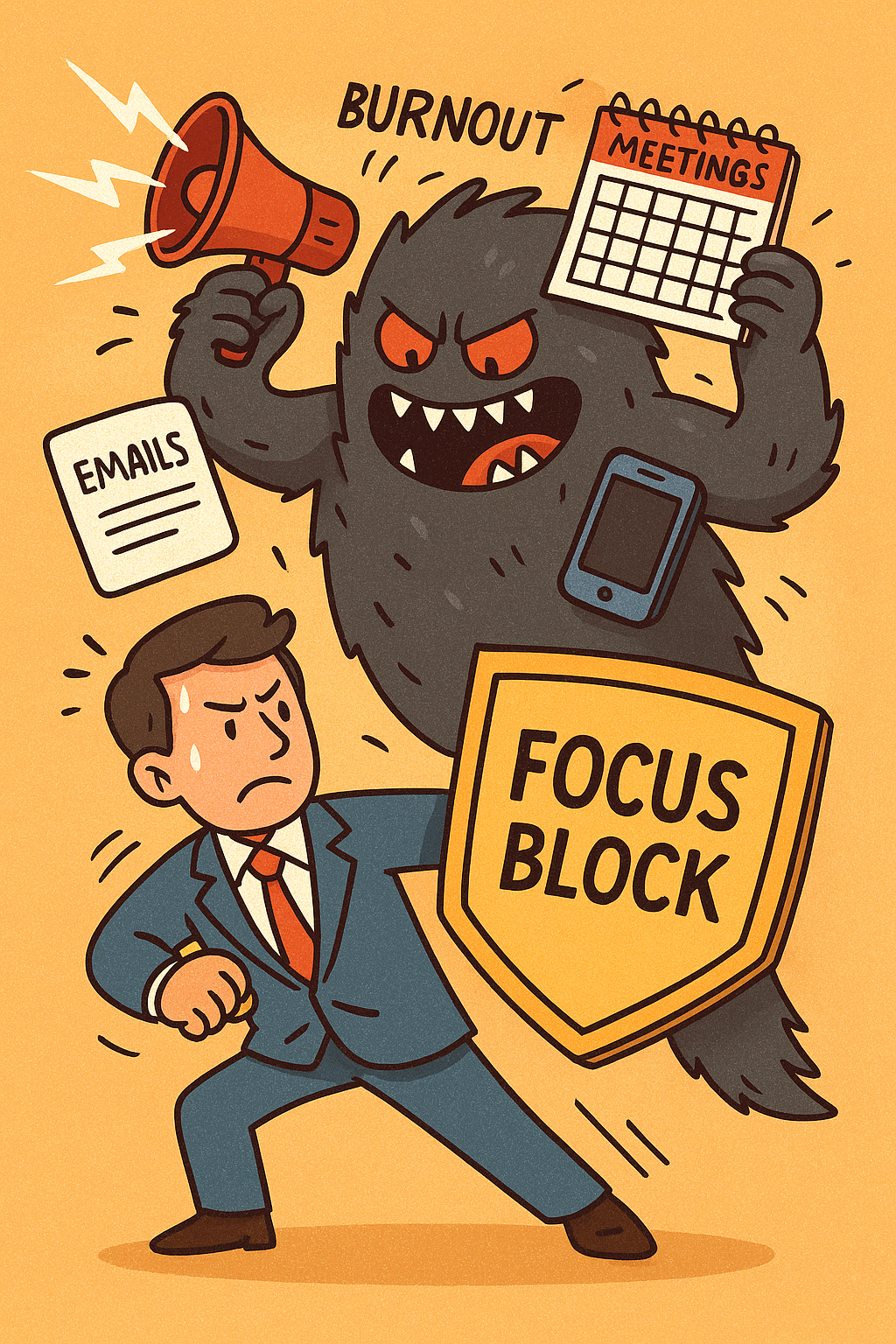TL;DR:
Feeling busy but not fulfilled? You’re not alone.
When the noise of day-to-day tasks takes over, it’s easy to lose sight of what really matters.
This isn’t just about getting more done—it’s about being intentional with how you approach work.
That’s what Working on Work really means: stepping back, regaining clarity, and creating space to do the work you’re truly proud of.
If you’ve been feeling stuck, this might be the reset you need.
Every day you start with a plan. Five high-priority tasks—clear, important, and worth your time.
And yet, as the day unfolds, uninvited priorities sneak in. Meetings pop up. A Slack thread derails your focus. Someone needs a quick review. By the time the day wraps up, those original tasks remain untouched.
You end the day feeling drained—not because you didn’t work hard, but because the things you truly wanted to move forward are still sitting untouched.
It’s not just frustrating—it starts to feel personal.
This repeats, and slowly grows into weeks or even months of feeling adrift.
You’re constantly doing, but not progressing. Busy, but not productive.
You show up, attend meetings where you barely contribute, move tickets around, answer messages… and yet, nothing meaningful gets done.
You’re still working—but you’re not doing the work that matters.
And that’s what chips away at your motivation.
🛠️ Working on Work
This isn’t about realizing one day that something’s off—it’s more subtle than that.
The feeling creeps up on you. You’re busy, your calendar’s packed, you’re responding to requests… but when you zoom out, the impact just doesn’t match the effort.
You start asking yourself:
Where am I going with all this? Am I proud of what I’m delivering?
If the answer is shaky, it’s time to shift—not just what you’re working on, but how you’re approaching it.
That’s the real meaning of working on work.
For me, that meant stepping back and looking at the big picture.
I wasn’t burnt out from the volume of tasks—I was burnt out from the lack of control.
I felt disconnected from the outcomes, like I was stuck in someone else’s priorities.
So I slowed down. I asked:
How does this fit into what I want to achieve?
What does success look like for me, not just for the team?
That’s when things started to shift.
Instead of a vanilla to-do list filled with whatever Slack threw at me, I started with vision:
- What did I believe was worth building?
- How did this align with the goals I care about?
- What impact could I uniquely deliver?
Once I had that, it became easier to navigate the chaos.
Sure, not every request will fit your strategy—and that’s fine.
But at least now you know which ones are yours to own, and which ones you’re doing out of duty.
Everyone owes it to themselves to take a meta-view of their work.
You deserve to feel proud of what you’re building.
That starts with working on the how—not just the what.
If you’re feeling overwhelmed right now, know this:
It’s okay to step back. Reflect. Journal. Ask for help.
Talk to a mentor, a manager, or even a friend outside work.
The goal isn’t to fix it all in a day.
It’s to reclaim your sense of direction—and your sense of self—one decision at a time.
🔕 But what about interruptions?
Even when you carve out focus blocks, interruptions find a way in—urgent messages, quick “one-sec” questions, unexpected pings.
It’s easy to spiral. But with the right mindset and habits, you can handle interruptions without letting them hijack your entire day.
Here’s what works:
✅ 1. Use a “Ready-to-Resume” Plan
Before switching context, jot down where you left off. This small trick reduces friction and helps you re-enter flow faster.
→ HBR
✅ 2. Set Boundaries Early
Let others know when you’re in heads-down mode.
If someone does interrupt, triage it:
Is it urgent or just loud? Most things can wait 30 minutes.
→ BetterUp
✅ 3. Limit Yourself with an “Interruption Budget”
Give yourself 2–3 passes a day to respond to unexpected asks guilt-free.
It creates awareness—and makes it easier to say no after that.
→ Adapted from Forbes
✅ 4. Let Tools Work for You
- Turn on Do Not Disturb during focus hours
- Batch-check messages
- Delay notifications until your break
✅ 5. Designate “Office Hours”
Block out predictable times when people can approach you.
This encourages async collaboration and protects your flow state.
→ Forbes
🧭 Final Thought
You don’t need to overhaul your life overnight.
But if you’re starting to feel like your time isn’t adding up to something meaningful, that feeling matters.
Listen to it. Be kind to yourself. Step back. Ask the harder question—not just what you’re doing, but why and how.
That’s what Working On Work really means.
And that’s what turns busy days into fulfilling ones.


